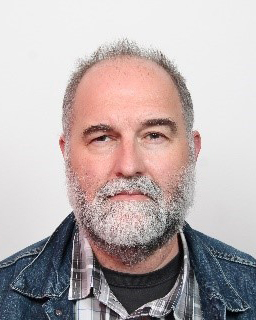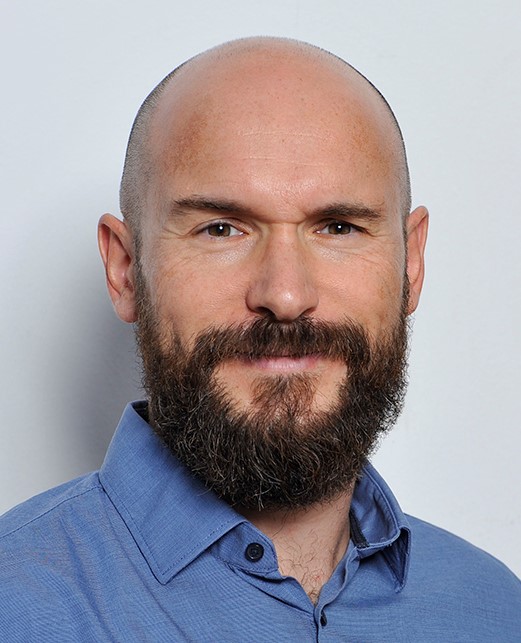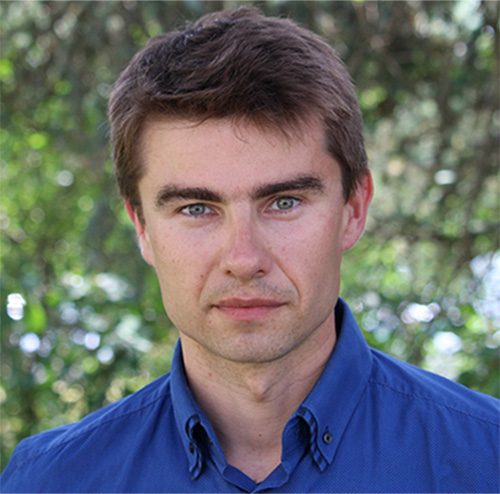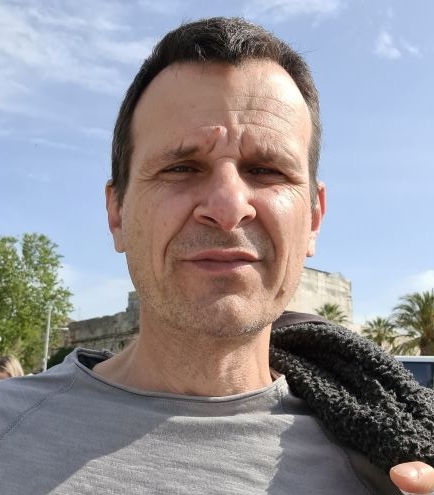Human Exposure to Non-ionizing Radiation
Dragan Poljak and Mario Cvetković, PhD
University of Split, Croatia
This Tutorial is mainly based on the book, D. Poljak, M.Cvetkovic, Human Interaction with Electromagnetic Fields; Computational Models in Dosimetry, Elsevier 2019, on some recent journal papers and activities in IEEE ICES SC6 Working Group.
Tutorial aims to cover several aspects of human exposure to electromagnetic fields (EMF) including not only the undesired exposure from artificial sources, but also the biomedical applications of electromagnetic fields. The tutorial outlines some basic aspects of electromagnetic fields in environment, coupling mechanisms between humans and electromagnetic fields, established biological effects of electromagnetic fields from static to high-frequency range, international safety guidelines related to limiting human exposure to those fields, including relevant exposure limits and safety guidelines, electromagnetic-thermal dosimetry models and the related analytical/numerical solution methods. Finally, some findings pertaining to activities carried out within the framework of IEEE ICES working groups, which Tutorial presenters participated (WG2, WG3, WG5 and WG7 in particular) will be addressed.
First, theoretical/experimental methods of incident field dosimetry for the assessment of external fields due to low frequency (LF) and high frequency (HF) sources are given in detail. Illustrative examples include analysis of power lines, transformer substations, PLC systems, RFID antennas, Wireless Power Transfer (WPT) systems and radio base stations pertaining to 2G/3G/4G and 5G mobile communication systems.
Then, the tutorial deals with some electromagnetic-thermal dosimetry methods for the assessment of human exposure to low frequency (LF), high frequency (HF) and transient electromagnetic radiation featuring the use of integral/differential equation formulations and related numerical solution procedures (primarily based on the use of Boundary Element Method – BEM, and Finite Element method – FEM) for the calculation of induced current densities, internal fields, specific absorption rate (SAR), incident power density (IPD), absorbed power density (APD), transmitted power density (TPD) and specific absorption (SA). Also, for HF exposures the related temperature increase in tissues is of interest. In particular, for GHz frequency range, as far as 5G systems are concerned, a surface temperature elevation on the air-body interface is considered. Computational examples pertaining to various realistic exposure scenarios, such as; pregnant woman/foetus exposed to low frequency (LF) fields, the human eye, the human brain and the human head exposed to HF electromagnetic fields will be given.
In particular, for GHz frequency range, several tissue models, from rather simple to more realistic, will be discussed. Moreover, the applicability of numerical integration at frequencies related to 5G will be discussed in terms of both matrix fill time and memory allocation. The set of tests for various combinations of source and observation triangles using the developed unit cube test will be demonstrated. The results of the convergence tests performed to investigate the effects of the increasing frequency and the discretization scheme on the numerical solution will be demonstrated, as well as a solution on how to curb the computational requirements by the proficient use of numerical integration.
The obtained numerical results for induced current densities, internal fields, SAR, IPD, APD TPD and SA are compared against exposure limits proposed by recently issued ICNIRP 2020 (International Commission on Non Ionizing Radiation Protection).
This is followed by some examples of biomedical applications of electromagnetic fields, including the transcranial magnetic stimulation (TMS), transcranial electrical stimulation (TES), but also some electrotherapy and magnetotherapy techniques. Also, some illustrative computational examples pertaining to thermal modeling of certain ophthalmological procedures will be given.
In the last part of the Tutorial the stochastic modeling of electromagnetic fields is discussed. Namely, the input parameters of models used in bioelectromagnetism and electromagnetic dosimetry suffer from inherent uncertainty. The values of body tissue parameters such as permittivity and the electrical conductivity differ appreciably, depending on the age and gender, but also between healthy and ill individuals. Moreover, they are obtained under different measurements on ex vivo animal and human tissues, and exhibit relatively significant variations from their averages. When used in a computational model, these average values sometimes result in a rough approximation of the realistic scenario. The models used in bioelectromagnetics and numerical dosimetry are computationally rather demanding as they represent tremendously complex physical phenomena. Despite the progress in high-performance calculation, uncertainty quantification (UQ) based on traditional Monte Carlo method is still an enormous burden regarding computational cost. Therefore, alternative methods such as generalized polynomial chaos and stochastic collocation have become of interest to many researchers in this research area. In this tutorial, an outline of the application of stochastic collocation (SC) together with some illustrative examples are given.
Finally, a sensitivity analyis on the impact of individual input parameters will be presented.
The Tutorial ends up by addressing some ongoing work pertaining to WG 7 activities regarding different averaging schemes and methods used in APD assessment.
 Dragan Poljak received his PhD in el. Eng. in 1996 from the Univ. of Split, Croatia. He is the Full Prof. at Dept. of Electron. and Computing, Univ. of Split. His research interests include computational electromagnetics (electromagnetic compatibility, bioelectromagnetics, ground penetrating radar and plasma physics). To date Prof. Poljak has published more than 160 journ. and 250 conf. papers, and authored some books, e.g. two by Wiley, New Jersey and one by Elsevier, St Louis. He is a Senior member of IEEE, a member of Editorial Board of Eng. Anal. with Boundary Elements, Math. Problems in Eng. And IET Sci. Measur. & Techn. He was awarded by several prizes for his research achievements, such as National Prize for Science (2004), Croatian sect. of IEEE annual Award (2016), Technical Achievement Award of the IEEE EMC Society (2019) and George Green Medal from University of Mississippi (2021). From May 2013 to June 2021 Prof. Poljak was a member of the board of the Croatian Science Foundation. He was involved in ITER physics EUROfusion collaboration and he is currently involved in DONES EUROfusion collaboration and in Croatian center for excellence in research for tech. sciences. He is active in few Working Groups of IEEE/Internat. Committee on Electromagnetic Safety (ICES) Tech. Comm. 95 SC6 EMF Dosimetry Modeling, (co-chair of WG2 and WG7).
Dragan Poljak received his PhD in el. Eng. in 1996 from the Univ. of Split, Croatia. He is the Full Prof. at Dept. of Electron. and Computing, Univ. of Split. His research interests include computational electromagnetics (electromagnetic compatibility, bioelectromagnetics, ground penetrating radar and plasma physics). To date Prof. Poljak has published more than 160 journ. and 250 conf. papers, and authored some books, e.g. two by Wiley, New Jersey and one by Elsevier, St Louis. He is a Senior member of IEEE, a member of Editorial Board of Eng. Anal. with Boundary Elements, Math. Problems in Eng. And IET Sci. Measur. & Techn. He was awarded by several prizes for his research achievements, such as National Prize for Science (2004), Croatian sect. of IEEE annual Award (2016), Technical Achievement Award of the IEEE EMC Society (2019) and George Green Medal from University of Mississippi (2021). From May 2013 to June 2021 Prof. Poljak was a member of the board of the Croatian Science Foundation. He was involved in ITER physics EUROfusion collaboration and he is currently involved in DONES EUROfusion collaboration and in Croatian center for excellence in research for tech. sciences. He is active in few Working Groups of IEEE/Internat. Committee on Electromagnetic Safety (ICES) Tech. Comm. 95 SC6 EMF Dosimetry Modeling, (co-chair of WG2 and WG7).
 Mario Cvetković
received his BSc in electrical engineering from the University of Split, Croatia in 2005. In 2009 he obtained MPhil degree from the Wessex Institute of Technology, University of Wales, UK. In December 2013 he received PhD from University of Split, Croatia. He is assistant professor at the Faculty of electrical engineering, mechanical engineering and naval architecture (FESB), University of Split were he teaches fundamentals of electrical engineering course. He held a series of tutorials and seminars related to advanced topics in bioelectromagnetics and various aspects of interaction of humans with electromagnetic fields at the: Technical University of Ilmenau, Germany (2010), Malardalen University, Vasteras, Sweden (2014, 2018), Nagoya Institute of Technology, Nagoya, Japan (2017), University of Maribor, Slovenia (2018, 2019), several Splitech conferences (2016, 2017, 2018, 2019), and SoftCOM conferences (2019, 2021). He is a recipient of the “Best Student Paper Award”, awarded at the 16th edition of the international conference SoftCOM 2008. At the Scientific Novices Seminar held in 2012, he was awarded with the recognition for his previous scientific achievements. To date he has published more than 70 journal and conference papers and several book chapters. In 2019 he coauthored with D. Poljak the book entitled “Human Interaction with Electromagnetic Fields – Computational Models in Dosimetry” published by Elsevier. He is a member of the IEEE/International Committee on Electromagnetic Safety (ICES) Technical Committee 95 SC6 EMF Dosimetry Modeling.
Mario Cvetković
received his BSc in electrical engineering from the University of Split, Croatia in 2005. In 2009 he obtained MPhil degree from the Wessex Institute of Technology, University of Wales, UK. In December 2013 he received PhD from University of Split, Croatia. He is assistant professor at the Faculty of electrical engineering, mechanical engineering and naval architecture (FESB), University of Split were he teaches fundamentals of electrical engineering course. He held a series of tutorials and seminars related to advanced topics in bioelectromagnetics and various aspects of interaction of humans with electromagnetic fields at the: Technical University of Ilmenau, Germany (2010), Malardalen University, Vasteras, Sweden (2014, 2018), Nagoya Institute of Technology, Nagoya, Japan (2017), University of Maribor, Slovenia (2018, 2019), several Splitech conferences (2016, 2017, 2018, 2019), and SoftCOM conferences (2019, 2021). He is a recipient of the “Best Student Paper Award”, awarded at the 16th edition of the international conference SoftCOM 2008. At the Scientific Novices Seminar held in 2012, he was awarded with the recognition for his previous scientific achievements. To date he has published more than 70 journal and conference papers and several book chapters. In 2019 he coauthored with D. Poljak the book entitled “Human Interaction with Electromagnetic Fields – Computational Models in Dosimetry” published by Elsevier. He is a member of the IEEE/International Committee on Electromagnetic Safety (ICES) Technical Committee 95 SC6 EMF Dosimetry Modeling.
Physical foundations of frequency-dependent bioelectromagnetic interactions
Maxim Zhadobov, PhD
IETR/CNRS, France
This tutorial will provide an overview of fundamental aspects related to interactions of electromagnetic waves with the human body. In particular, it will deal with electromagnetic properties of biological tissues, frequency-dependent physical mechanism of interaction between electromagnetic waves and biological tissues, as well as numerical and experimental electromagnetic dosimetry and exposure assessment.
 Maxim Zhadobov received the Ph.D. degree from the IETR (Institut d’Electronique et des Technologies du numeRique), University of Rennes 1, France, in 2006. He was a Postdoctoral Researcher with the Center for Biomedical Physics, Temple University, Philadelphia, PA, USA, until 2008, and then joined the French National Center for Scientific Research (CNRS). He is currently Senior Research Scientist at the IETR/CNRS and head of the eWAVES research team, IETR. His scientific interests and research activities are in the field of innovative biomedical applications of electromagnetic fields and associated technologies. He coauthored 5 book chapters, more than 80 research papers in peer-reviewed international journals and 200 contributions to conferences and workshops. His review article in the Int. J. Microwave Wireless Techn. has been the most cited paper in 2016-2020. A paper published by his research group in 2019 is in Journal Top 100 of Nature Scientific Reports. He has been involved in 25 research projects (12 as PI). Dr. Zhadobov was the TPC co-chair of BioEM 2021 and BioEM 2020. He was a TPC member and / or session organizer at international conferences, including IEEE IMBioC 2022, AT-AP-RASC 2022, BioEM 2019, EuMW 2019, IEEE iWEM 2017, MobiHealth 2015-2017, BodyNets 2016, and IMWS-Bio 2014. He is an elected member of EBEA Council, member of IEEE TC95.4, and vice-president of URSI France Commission K. He is Associate Editor of IEEE Journal of Electromagnetics RF and Microwaves in Medicine and Biology and served as a guest editor of several special issues, including “Human Exposure in 5G and 6G Scenarios” of Applied Sciences. He is a member of the Technical Advisory Committee URSI Com-K and has been acting as an expert at research councils worldwide. He received CNRS Medal in 2018, EBEA Award for Excellence in Bioelectromagnetics in 2015, and Brittany’s Young Scientist Award in 2010.
Maxim Zhadobov received the Ph.D. degree from the IETR (Institut d’Electronique et des Technologies du numeRique), University of Rennes 1, France, in 2006. He was a Postdoctoral Researcher with the Center for Biomedical Physics, Temple University, Philadelphia, PA, USA, until 2008, and then joined the French National Center for Scientific Research (CNRS). He is currently Senior Research Scientist at the IETR/CNRS and head of the eWAVES research team, IETR. His scientific interests and research activities are in the field of innovative biomedical applications of electromagnetic fields and associated technologies. He coauthored 5 book chapters, more than 80 research papers in peer-reviewed international journals and 200 contributions to conferences and workshops. His review article in the Int. J. Microwave Wireless Techn. has been the most cited paper in 2016-2020. A paper published by his research group in 2019 is in Journal Top 100 of Nature Scientific Reports. He has been involved in 25 research projects (12 as PI). Dr. Zhadobov was the TPC co-chair of BioEM 2021 and BioEM 2020. He was a TPC member and / or session organizer at international conferences, including IEEE IMBioC 2022, AT-AP-RASC 2022, BioEM 2019, EuMW 2019, IEEE iWEM 2017, MobiHealth 2015-2017, BodyNets 2016, and IMWS-Bio 2014. He is an elected member of EBEA Council, member of IEEE TC95.4, and vice-president of URSI France Commission K. He is Associate Editor of IEEE Journal of Electromagnetics RF and Microwaves in Medicine and Biology and served as a guest editor of several special issues, including “Human Exposure in 5G and 6G Scenarios” of Applied Sciences. He is a member of the Technical Advisory Committee URSI Com-K and has been acting as an expert at research councils worldwide. He received CNRS Medal in 2018, EBEA Award for Excellence in Bioelectromagnetics in 2015, and Brittany’s Young Scientist Award in 2010.
Historical and theoretical aspects of resonant near-field radio power transfer-ways from basics to maximum performances
Zoran Blažević, PhD
University of Split, Croatia
This tutorial is aimed to depict basic theoretical aspects of resonant wireless power transfer technology that becomes more and more interesting with development of Internet-of-Things and 5G/6G networks. It originates from very dawn of radio, as proposed by Nikola Tesla at the turnover of XIX/XX century. He showed by his New York Laboratory and Colorado Springs experiments that, apart from efficient communication capabilities, the radio-technology can be efficient for power transfer purposes as well. For that matter, he developed several propositions for radio power transfer techniques based on the application of electrically small antennas in resonance, which was finalized by his global “Word System” concept of wireless telegraphy, telephony, and electrical energy transfer. In perspective, an efficient solution to transmission of energy without wires for purposes charging existing myriad of electronic gadgets, smartphones, sensors, various electric vehicles, and other electric devices would enable the wireless communication by wirelessly charged devices, a concept thar can be called “true mobility”. Actually, there exist various transmission techniques that can be applied depending on the requirements of energy transmission. Along these lines, there are several approaches to transmission of energy without wires, each could be attributed to the specific regions of the field that the antenna radiates. In all of them however, to achieve a high transfer efficiency, it is necessary to provide a system setup that minimizes the power loss due to the propagation of radio-waves and mismatch. Namely, the energy transmission can be executed in the far field of antenna, which assumes the usage of aligned electrically large antennas, each with high directivity to minimize the propagation loss. On the other hand, the original proposition of Tesla relays on resonant coupling of electrically small antennas in the near field, where the crucial matter is to set the power transfer system in resonance and in conditions of maximum power transfer performances. The latter is the main issue of this tutorial, as the technique is already shown to be feasible for efficient power transfer on small and medium distances. The tutorial begins with some important historical aspects that depicts the development of the near-field energy transfer concept tightly connected to the birth of radio and the development of the idea, which is followed by its theoretical basics. An important phenomenon of the system resonant frequency splitting is addressed. The most important issue of achieving an efficient power transfer at a distance is observed from the standpoint of the theory of antennas, based on spherical modes electromagnetic field decomposition. Several approaches to the maximum performances are presented and mutually compared: frequency tracking, odd/even mode tunning, critical coupling, and conjugate matching. We shall also see some practical schemes and discuss some specific problems and solutions developed by the antenna theory and show some illustrative examples of the phenomenon.
 Zoran Blažević was born in Split, Croatia, 1968. He received his BS degree in 1993, MS degree in 2000 and PhD in 2005 at the University of Split, Faculty of Electrical Engineering, Mechanical Engineering and Naval Architecture, Split, Croatia. For six years he was with Croatian Railways as a telecommunication engineer. Currently he is Full Professor at the Department of Electronics, leading several courses in the area of radio on the graduate and postgraduate study of information and communication technology. He was involved in organization and execution of several international conferences as an organizer or a technical committee member, and several national science projects as a project leader or a researcher. He appears as an author or coauthor of more than 90 journal and conference papers, two book chapters, and several studies in radio systems, channel modeling, antennas, radio-propagation and microwaves. He is a member of IEEE, Korema and CCIS. Currently, he serves as IEEE EMC Society Croatian Chapter Chair.
Zoran Blažević was born in Split, Croatia, 1968. He received his BS degree in 1993, MS degree in 2000 and PhD in 2005 at the University of Split, Faculty of Electrical Engineering, Mechanical Engineering and Naval Architecture, Split, Croatia. For six years he was with Croatian Railways as a telecommunication engineer. Currently he is Full Professor at the Department of Electronics, leading several courses in the area of radio on the graduate and postgraduate study of information and communication technology. He was involved in organization and execution of several international conferences as an organizer or a technical committee member, and several national science projects as a project leader or a researcher. He appears as an author or coauthor of more than 90 journal and conference papers, two book chapters, and several studies in radio systems, channel modeling, antennas, radio-propagation and microwaves. He is a member of IEEE, Korema and CCIS. Currently, he serves as IEEE EMC Society Croatian Chapter Chair.
